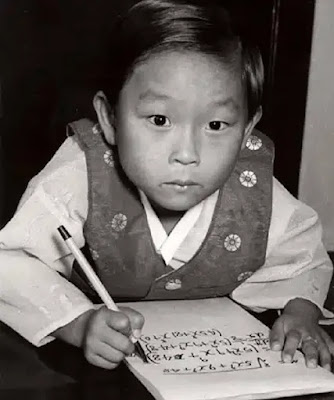The hidden Secret of a 600 years old painting.
This 600-year-old picture conceals a secret.
It may appear to be a typical Renaissance work of art, but upon closer inspection, the halo around Mary's head bears an inscription in Arabic.
What exactly does it say? That's when things start to become interesting...
Masaccio, an influential Florentine artist, produced that depiction of the Madonna and Child in the 1420s.
The "Arabic" he scribbled on Mary's halo is nonsense — it's a copy of Arabic, not the actual thing.
Masaccio used this technique in several of his other paintings.
However, Masaccio's usage of pseudo-Arabic (also known as pseudo-Kufic) was not unusual.
Throughout the Italian Renaissance, this type of mangled Arabic calligraphy was commonly used to embellish the halos or gowns of Mary and Jesus.
But, why?
The story, however, begins several centuries earlier.
Because Renaissance "pseudo-Arabic" is far from the only example of Christian Europe adopting elements of Islamic art, architecture, and culture.
During the eighth century, King Offa of England struck this coin. It bears his name, as well as an erroneous Arabic inscription that reads:
"Muhammad is the Messenger of Allah."
It was a forgery of an Abbasid Caliphate gold dinar that had made its way to England.
Martin Luther, a Protestant reformer, held one of the renowned "Hedwig Glasses," so-called because they formerly belonged to a Polish princess named Hedwig.
They were most likely created in Fatimid Egypt or Syria in the early 12th century for Christian benefactors.
This robe, which was made in Egypt or Spain and features Arabic inscriptions, once belonged to Thomas à Becket.
Islamic textiles, metalwork, pottery, and glassware were generally of superior quality to those produced in Europe at the same time — and therefore highly prized.
The Baptistère de Saint Louis is one of the outstanding instances of this, as well as the spread of Islamic art throughout Medieval Europe in general.
It is an amazing piece of metalwork crafted in the early 1300s in Mamluk Egypt by the artisan Muhammad ibn al-Zayn.
It is made of brass and inlaid with gold and silver and depicts an exceedingly complicated, uninterrupted picture of princes hunting and battling, as well as exotic animals and floral design.
It eventually made its way to France, where it was used to baptize members of the French royal family until 1856.
This brass pilgrim flask was almost undoubtedly produced by Islamic workers for Christian clients in Syria in the 13th century.
It combines Christian motifs (such as the Madonna and Child and the Nativity) with Islamic ornamentation and Kufic/naskhi inscriptions.
The Griffin of Pisa, for example, is a stylized bronze beast decorated in arabesque etching and Kufic calligraphy that was constructed in Al-Andalus (Muslim-ruled Spain) around the 11th century.
It stood atop Pisa Cathedral in Italy for hundreds of years before being replaced by a copy.
But it was not just about trade; there was also direct influence.
In Spain, which had been governed for centuries by Islamic dynasties, Christian art and architecture were profoundly impacted by their Islamic counterparts.
This is referred to as the "Mudéjar" style.
The ceiling of the Royal Convent of Santa Clara in Tordesillas, built in the 14th century, is a good example, with its interlocking, geometric design.
Muqarnas, horseshoe arches, calligraphic and floral decoration, and other elements were influenced by Islamic architecture.
However, Islamic architecture's influence on Christian Europe was not limited to Spain and Portugal.
Many believe that the pointed arch, a characteristic feature of Gothic architecture, was brought to Europe from the Middle East, possibly by returning Crusaders.
Specific ornamental themes were also taken, and many Gothic structures, such as the Le Puy Cathedral in France, include architectural aspects explicitly drawn from Islamic art.
And the Gothic trefoil arch may have its ultimate origins in Syria's Umayyad architecture from the 8th century.
This was not a one-way street.
The influence of Classical and Byzantine architecture on early Islamic structures, such as Damascus' Great Umayyad Mosque, is just one example of mutual (but not equal) influence.
But that's another story for another time.
One location in particular encapsulates all of this: the Cappella Palatina in Palermo, Sicily.
It was constructed in the 12th century and mixes Norman, Byzantine, and Islamic design into one magnificent structure.
Cultural crosscurrents abound in the Mediterranean.
Which brings us back to Italy, then, and to the use of pseudo-Arabic decoration in Renaissance art.
Why did they do it?
Some have speculated that artists imitated Arabic to evoke the atmosphere of the Holy Land (i.e. where Mary was from), which was then under Islamic rule.
Or maybe it was only the aesthetic features of Arabic writing and its aptitude for decorating.
Writing itself was a type of art in Islamic art, more than in any other artistic tradition in the world, whether utilized in metals, pottery, ivory, or books...
Using Kufic, Naskhi, or Thuluth — all calligraphic variants of Arabic — the written word was an infinitely malleable artistic medium.
Calligraphic ornamentation even became an important part of architecture, where words were blended into and among abstract decoration.
The halo of this Madonna is reminiscent of Mamluk Egyptian metal dishes; notice how the writing bands are split by rosettes or roundels.
As we have seen, such luxury products were widespread in Medieval and Renaissance Europe. Was this the work of Da Fabriano?
The psuedo-Arabic used by Masaccio to decorate his painting doesn't say anything itself.
But the fact he used this imitation of Arabic calligraphy says a lot about the immense influence of Islamic art and architecture on Medieval Europe.
The stories art can tell...































Comments
Post a Comment